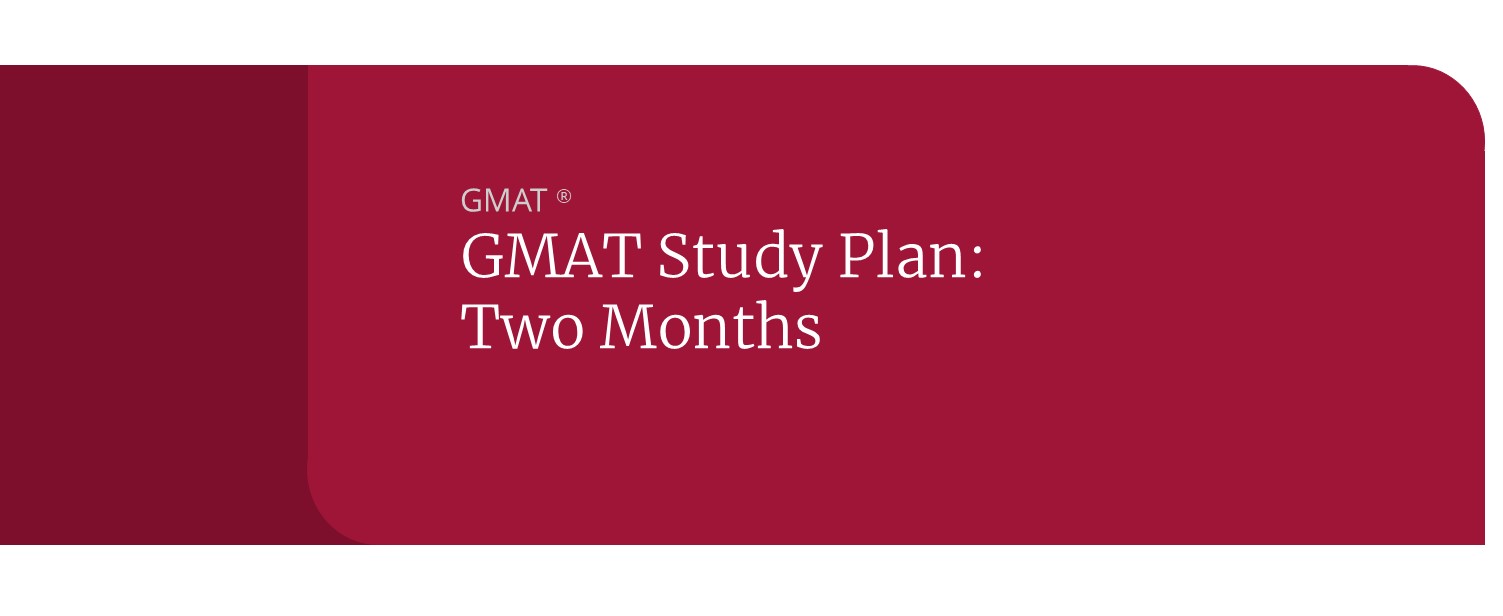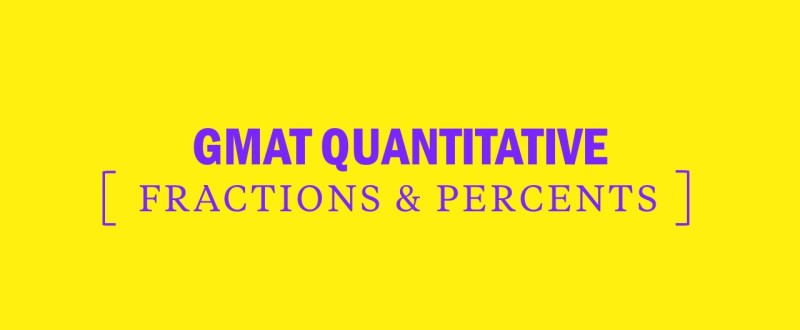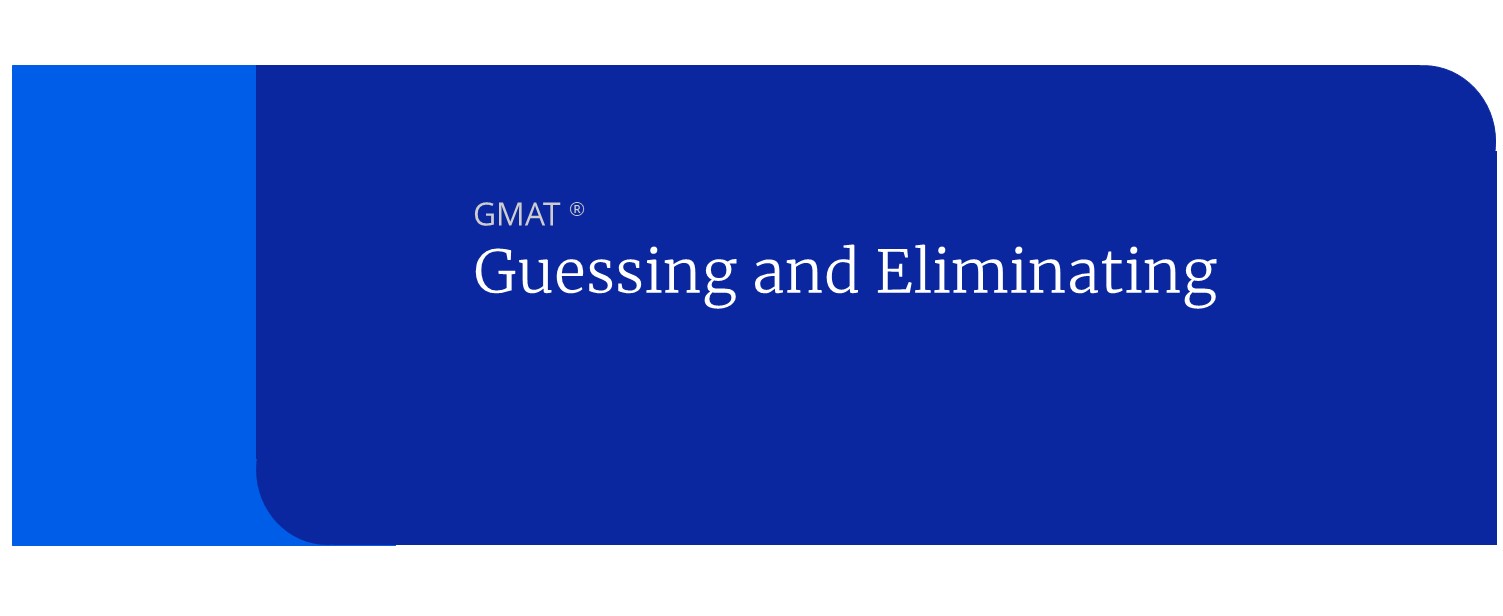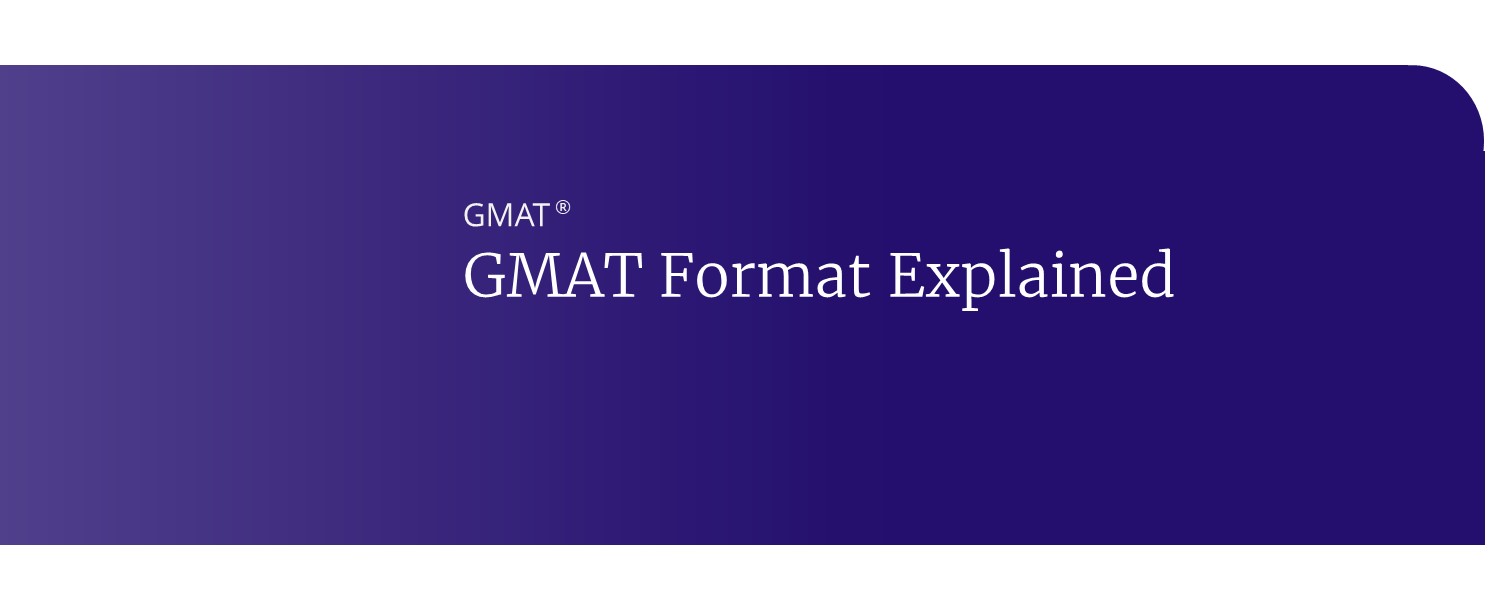How to Study for the GMAT in 2 Months
Two months is a very compressed time frame to study for the GMAT, so if you find yourself in that situation, don’t delay beginning your studies.
Divide your study timeline into two parts. The first part will consist of two practice tests from mba.com interspersed with two to three weeks of content-based studies. In this first part, use the practice tests as diagnostic tools to identify strengths and weaknesses. Your study sessions will focus on individual content areas and question types where you have the most opportunity to improve your score. Each type of GMAT problem has its own unique opportunities and challenges, so create study sessions that dive into the specifics of each question type that represents an opportunity for improvement.
The second part of your study timeline mixes content studies with timed sets to practice the timing strategies that you intend to apply during the actual test. You will take three practice tests from mba.com during this second phase of your studies. These three practice tests serve a dual purpose: While they are still diagnostic tools, revealing your developing strengths and weaknesses, they are also opportunities for strategy refinement.
Developing a coherent study plan (let alone mastering the material) in two months can be a daunting task. Remember that private tutoring, GMAT Bootcamp classes, and Self-Paced courses are all available to help you succeed.
TABLE OF CONTENTS
- Taking Diagnostic Tests
- Picking a Study Schedule
- Developing a Study Plan
- Sample Study Plans
- Practicing Time Management
- Study Essentials
2 Month Study Guide Highlights
Divide your study time into two sections:
- First, learn the main facts, concepts, question types, and strategies across all three sections of the GMAT (2-3 weeks).
- Then, take mixed timed problem sets and practice tests and review them deeply to solidify your skills and lift your score (4-5 weeks).
Step 1: Take a GMAT Diagnostic Test
Before anything else, familiarize yourself with the test structure and timing.
Take a full-length, realistic GMAT practice test to find out what your baseline Quantitative, Verbal, and Data Insights scores are. Your practice test results will include not just your scores but also information about what types of problems you did well on and which ones gave you trouble. Additionally, the practice test will give you valuable information about which question types took you longer to solve. This information will help you design your study plan.
Another benefit of taking a GMAT practice test is that you will become familiar with the test’s format and timing. Your review of the individual questions will help you to know what you need to prioritize in order to improve. As you study, you will know exactly how you’ll use what you’re learning to ace test problems.
Taking GMAT practice tests under conditions as similar as possible to those you will experience on Test Day is important. For example, don’t take longer breaks than allowed (on the real test, you’ll get one 10-minute break), and don’t eat or drink, except as would be allowed during your official test. If possible, take the test in one sitting, and take it at the same time of day that you intend to take the real test.
Finally, plan to spend at least 3 hours reviewing your test in depth within 2 days of taking it. There’s a lot of great data to help you in your studies; take the time to analyze it.
[GOOD TO KNOW: What’s a Good GMAT Score?]
Step 2: Set Your Study Schedule
Studying most days of the week will improve your score more than studying the same total amount of time but just on one or two days a week. Many students find that studying 5 days a week in three 30-minute segments, for an hour and a half each day, helps them make significant progress. Because your test is in 60 days, try to study for an average of 2 hours a day or more over the course of each week.
A GMAT mobile app gives you flexibility and convenience to create small study sessions throughout the day. But you will require dedicated 30+ minute study sessions when you can work on focused content from a resource such as a GMAT book. Make sure you build these study sessions into a workable schedule.
Finally, do not study new material the day before any practice test. On those days, if you study at all, you should only review material you’ve already covered or practice problems you’ve already done.
[GMAT CONTENT APPS: Apple App Store or Google Play]
Block out time to take five total full-length practice tests. Take the first test at the very beginning of your study schedule, and take the second test two or three weeks later. The final three practice tests should be taken one week apart from each other, ideally on the same day of the week and time of day that you plan to take the official test.
Practice tests measure your progress, make you more familiar with the test’s timing and format, and build your mental endurance. After each test, invest at least 1.5 hours reviewing the test.
Schedule your study time and practice tests on your calendar and then keep those appointments with yourself. The same way you show up for class or work on time, you are going to “show up” for GMAT studying on time.
FREE PREMIUM CONTENT
GMAT Math Quicksheet
Unlock access to our free GMAT Math Quicksheet
Step 3: Develop Your Study Plan
How should you study? An effective approach is to first use a resource such as a GMAT book in conjunction with the GMAT Official Guide to learn some strategies and content, and then follow up by practicing what you just learned with test-like problems. Applying what you learn right away to the types of problems you’ll see on Test Day will help you solidify your knowledge so it sticks with you.
Before anything else, if you struggle with aspects of pen-on-paper math (most likely because you have not done this in years), consider completing the Foundations of GMAT Math program in the first week of your studies.
What should you study after that, or if you do not struggle with that issue? That depends on the results of your practice test. For the next three weeks, focus on material that is a “weakness opportunity” for you, and the material that is most often tested.
A “weakness opportunity” is something that you’re struggling with right now, but you also think you have the opportunity to improve. Maybe you know how to do it but you’re slower than needed. Or maybe you did well on this topic in school, but you need to practice to get your skills back. Don’t focus on your “worst” weaknesses—go after the lower-hanging fruit first. For example, people all too often decide to work on probability questions, even though this content area is one of the most time-consuming to master and is not as commonly tested—don’t start here.
An example of a better decision is to focus on linear equations and exponents first. These are more frequently tested than many other topics. In addition, these form a foundation for the math mechanics needed to solve many other questions. So if these are a weakness for you, start with linear equations and exponents; worry about other content later.
Additionally, statistics topics are very common on the GMAT. Average and median are far more commonly tested than standard deviation, so again, start with the material that is more commonly tested.
On the Verbal side, “Critical Reasoning: Find the Assumption” questions form a foundation that you can use to master many other question types. If reading comprehension questions are a weakness, invest time in them early in your study plan.
During the week before your second practice test, add in some general review of strengths that you may not have practiced much in the first week or two. For example, if you’re great at Critical Reasoning (and therefore haven’t been prioritizing it in your studies), do some CR problems this week to solidify your approach before your practice test.
Finally, there is an issue of Data Insights questions. The actual content tested in this section largely mimics the content tested in the Quantitative and Verbal sections, so improving content from these two sections will itself generate improvement in Data Insights. After that, you will want one week of study sessions to master the peculiarities of the Data Insights question types.
Two Sample GMAT Study Plans
Below are two examples of real study plans: one for Casey, who self-studies, and one for Ayo, who takes a Bootcamp class and is aiming for a very high score.
| Future mba | casey | ayo |
|---|---|---|
| Goals | Target score: 615. Plans to earn an MBA while working full-time as a product manager. | Target score: 685 (a very high score). Will take leave from an engineering job to earn an MBA from a school with a top national ranking. |
| Diagnostic Score | 545 | 615 |
| Week 1 | – Practice test + review (6 hours) – 5 study days × 1.5 hr/day, one content area per day – 13 total hours | – Practice test + review (6 hours) – Class × 3 days, 3.5 hr/day + 1 hr/day content area study session on class day – 19.5 total hours |
| Week 2 | – 5 study days × 1.5 hr/day, one content area per day – 1 study day × 4.5 hr, 3 content areas – 12 total hours | – Class × 3 days, 3.5 hr/day + 1 hr/day content area study session on class day – 2 study days × 3 hr/day, two content area per day – 19.5 total hours |
| Week 3 | – Practice test + review (6 hours) – 5 study days × 1.5 hr/day, one content area per day –13 total hours | – Practice test + review (6 hours) – Class × 4 days, 3.5 hr/day + 1 hr/day content area on class day –24 total hours |
| Week 4 | – 3 study days × 1.5 hr/day, one content area per day – 2 study days × 1.5 hr/day, mixed content – 1 study day × 4.5 hr, 3 mixed content sets – 12 total hours | – 3 study days × 3 hr/day, two content areas per day – 3 study days × 3 hr/day, two mixed content sessions per day –18 total hours |
| Week 5 | – Practice test + review (6 hours) – 2 study days × 1.5 hr/day, one content area per day – 2 study days × 1.5 hr/day, mixed content –12 total hours | – Practice test + review (6 hours) – 3 study days × 3 hr/day, two content areas per day – 1 study days × 3 hr/day, two mixed content sessions per day – 18 total hours |
| Week 6 | – 3 study days × 1.5 hr/day, one content area per day – 2 study days × 1.5 hr/day, mixed content – 1 study day × 4.5 hr, 3 mixed content sets – 12 total hours | – 3 study days × 3 hr/day, two content areas per day – 3 study days × 3 hr/day, two mixed content sessions per day – 18 total hours |
| Week 7 | – Practice test + review (6 hours) – 2 study days × 1.5 hr/day, one content area per day – 2 study days × 1.5 hr/day, mixed content – 12 total hours | – Practice test + review (6 hours) – 3 study days × 3 hr/day, two content areas per day – 1 study days × 3 hr/day, two mixed content sessions per day – 18 total hours |
| Week 8 | – Practice test + review (6 hours) – 2 study days × 1.5 hr/day, one content area per day – 2 study days × 1.5 hr/day, mixed content – 12 total hours | – Practice test + review (6 hours) – 3 study days × 3 hr/day, two content areas per day – 1 study days × 3 hr/day, two mixed content sessions per day – 18 total hours |
| Day Before the Test | Nothing | Nothing |
| Total Prep Hours | 98 hours | 153 hours |
You may notice, if you have read the article How to Study for the GMAT in 3 months, that Caseys’ total study time is almost the same in this plan, despite studying for one month less. This reflects a hard truth: Most people who study for the GMAT need approximately 100 hours of prep time. Casey’s plan has a little less than the average hourly recommendation mentioned above (approximately 2 hours a day on average), but it would still generate a solid score improvement.
Ayo’s plan in this timeframe is particularly aggressive. In fact, in this plan, Ayo’s total study hours in two months actually exceeds the total study time from the 3-month plan This reflects the nature of a Bootcamp course, which is an intense course that tackles every aspect of the GMAT in two or three weeks.
Step 4: Practice Time Management
The GMAT is scored differently from a traditional exam: The score is not based on the number of problems you get right, but rather on the difficulty of the problems that you get right vs. wrong. Accordingly, time management strategy is crucial. If you spend too much time on the hardest questions, trying to get them right, you’ll have to rush on easier ones, and making careless mistakes on easier problems will cost you far more than the boost you can earn by getting hard problems right.
If you are planning on taking the GMAT in a testing center, you can develop special note-taking techniques using a GMAT test simulation booklet. This preparation tool can help you become comfortable with the laminated scratch paper that you’ll use on an Official GMAT administered in a testing center.
If you are planning on taking the GMAT Online exam, you can use both a digital and a physical whiteboard for your scratch work. Having a plan for when to use each type can help you optimize your question times.
[NEXT: GMAT Time Management]
GMAT Study Essentials
Below are resources to help you prepare for the GMAT and reach your target GMAT score.
*Higher Score Guarantee: Conditions and restrictions apply; for complete guarantee eligibility requirements, visit kaptest.com/hsg.




